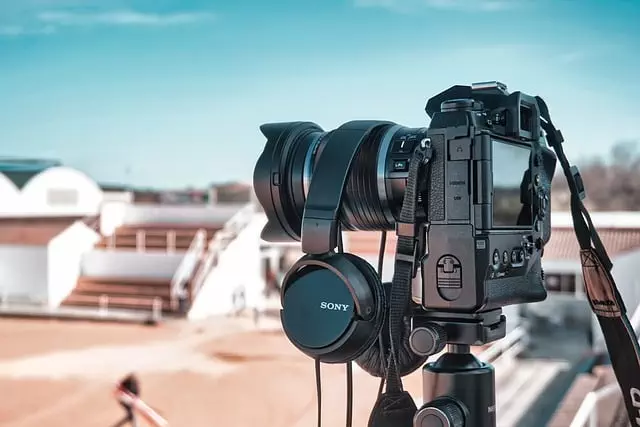Converting DivX files is a key skill for navigating today's dynamic digital media landscape. As multimedia experiences evolved from static images to rich content, compatibility challenges emerged across diverse devices and platforms. The rise of streaming services and online sharing further complicated matters, especially with complex formats like DivX. However, innovative solutions like efficient encoding and universal file formats have addressed these issues. "How to Convert DivX" has become essential for users to enjoy media seamlessly, as demonstrated by the format's popularity in the late 1990s when it revolutionized video compression and sharing. Modern tools simplify this process, allowing users to transform videos for modern streaming or portable devices while ensuring optimal quality and accessibility across the digital ecosystem.
Unlocking Digital Media’s Potential with DivX Conversion
The digital media landscape has evolved exponentially, transforming how we consume content. This rapid transformation also brought challenges related to compatibility and diverse file formats. In response, pioneering innovations like DivX emerged, revolutionizing video compression and streaming. DivX, a powerful video codec, offered solutions for digital media enthusiasts seeking high-quality, efficient videos.
This article explores the evolution of digital media, introduces DivX’s unique features, delves into its innovative compression techniques, provides a step-by-step guide on converting videos to DivX, and examines its lasting impact on modern streaming technologies. Learn how to leverage DivX for optimal video experiences today and explore potential future applications.
# Blog Post Outline: Unlocking the Potential with DivX Conversion

Converting DivX files has become a crucial step for digital media enthusiasts, especially with the ever-evolving multimedia landscape. The process involves transcoding video content to optimize its quality and compatibility across various devices and platforms. DivX, known for its high-quality video compression, offers an efficient way to reduce file sizes without significantly impacting visual fidelity. By utilizing specialized tools and codecs like DivX Converter, users can effortlessly transform their videos, ensuring they remain accessible and enjoyable on modern streaming services and portable media players.
Learning how to convert DivX is straightforward with the right tools at hand. Many online platforms provide user-friendly converters that support this format, simplifying the process for beginners. These converters not only handle the technical aspects of conversion but also offer options to customize video settings, ensuring users get the best possible outcome. Whether it’s preparing a movie for offline viewing or optimizing a video for online sharing, DivX conversion is an accessible and powerful tool in the digital media arsenal.
1. The Evolution of Digital Media and Its Challenges

The evolution of digital media has been nothing short of transformative, revolutionizing how we consume and interact with content. From the early days of static images and simple text to today’s rich multimedia experiences, digital media has continually pushed boundaries. However, this rapid progress also presents significant challenges. One of the key hurdles is ensuring compatibility and accessibility across diverse devices and platforms. For instance, while DivX format was once popular for video compression, maintaining backward and forward compatibility as technology advances has become increasingly complex.
To address these challenges, innovative solutions like efficient encoding techniques and universal file formats are essential. Converting media files, such as successfully converting DivX to other compatible formats, plays a crucial role in this process. By adopting standards that promote interoperability, digital media creators can ensure their content reaches a broader audience without the hassle of compatibility issues. This not only enhances user experience but also fosters a more inclusive and dynamic digital ecosystem.
– Explore the rapid digital transformation and its impact on media consumption.

The digital age has brought about a revolution in how we consume media, transforming traditional methods at an unprecedented pace. With advancements in technology, the way content is created, distributed, and accessed has evolved dramatically. This rapid digital transformation has had a profound impact on the media industry, challenging long-standing models and empowering users with unprecedented choices. Consumers now have access to vast libraries of content at their fingertips, thanks to streaming platforms and online entertainment hubs. The convenience and accessibility of digital media have reshaped our habits, leading to a global cultural exchange as we can easily explore diverse forms of storytelling from around the world.
Converting DivX files has become a crucial aspect of this shift, allowing users to enjoy their media across multiple devices and platforms. DivX, known for its high-quality video compression, has needed adaptable solutions to keep up with the digital transformation. Innovative tools and software have emerged to address this, enabling users to seamlessly convert DivX videos into compatible formats for various streaming services, personal devices, or even older hardware. This process streamlines media accessibility, ensuring that consumers can continue to enjoy their favorite content without compatibility issues, further enriching their digital media experience.
– Discuss the challenges of compatibility and file formats in early digital media.

In the nascent days of digital media, one of the primary hurdles was ensuring compatibility and interoperability across diverse platforms and devices. With various file formats vying for dominance—from MPEG to WMV, and later DivX—users often found themselves locked into specific ecosystems, hindering seamless content sharing. The lack of standardized protocols made it a complex task to play media files on different operating systems or multimedia devices. This fragmented landscape posed significant challenges for content creators and consumers alike, leading to the need for innovative solutions that could bridge these gaps.
Converting file formats, such as how one might easily convert DivX to MP4 using readily available tools, became an essential skill. These conversions were not merely about format flexibility; they addressed critical issues like device compatibility, ensuring that digital media could reach its intended audience regardless of the hardware or software being used. By providing universal playback capabilities, these conversion methods democratized access to digital content, paving the way for today’s diverse and interconnected multimedia experiences.
– Set the stage for why innovative solutions like DivX emerged.

In the late 1990s, as digital media began to transform entertainment and communication, the need for more efficient and compatible video formats became increasingly pressing. The rapid growth of online streaming and peer-to-peer file sharing platforms challenged existing standards, demanding solutions that could balance quality with file sizes small enough for seamless distribution. This was the backdrop against which innovative solutions like DivX emerged.
DivX, developed by DivX, Inc., aimed to address these challenges by offering a new compression algorithm that significantly reduced video file sizes without sacrificing too much quality. Its arrival was timely, as it provided an alternative to the then-dominant formats, such as MPEG-2, which were often cumbersome and not well-suited for the burgeoning digital landscape. How to Convert DivX played a crucial role in popularizing this format, making it easier for users to access and share high-quality video content efficiently.
The digital media landscape has evolved exponentially, and innovations like DivX play a pivotal role in shaping our future viewing experiences. By addressing compatibility issues and enhancing file formats, DivX conversion technology ensures that users can access and enjoy their favorite content seamlessly. As we continue to embrace the digital revolution, understanding how to convert DivX remains crucial, offering both convenience and compatibility for all media enthusiasts.
